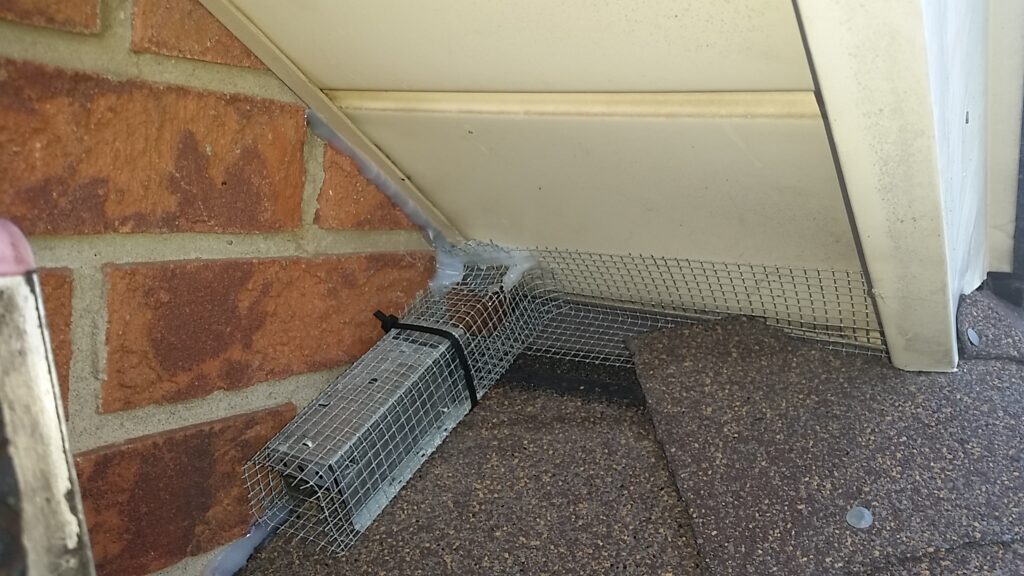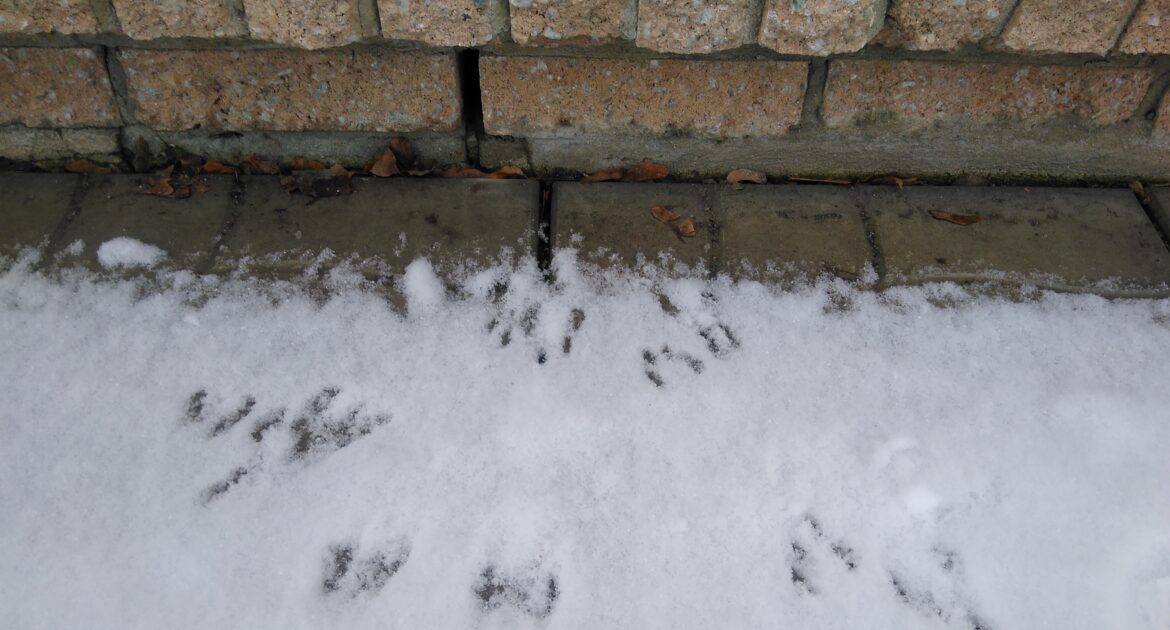Have you ever wondered why your attic or basement seems to attract mice? Or perhaps you’ve tried multiple techniques and remedies in an attempt to chase these pesky rodents away?
Understanding mouse behavior can go a long way in helping curb a mouse infestation. In this blog, we delve into how food and water restrictions impact mouse behavior, signs of a mouse infestation, and the steps that an experienced wildlife technician can take to control such an infestation.
Furthermore, we explore the benefits of hiring professional mice removal in Minneapolis and ways to minimize the risk of having a mouse infestation in your home. So, grab a cup of tea, sit back, and get ready to gain some handy mouse-control insights.
How Do Food and Water Restrictions Affect Mouse Behavior?
When it comes to understanding mouse behavior, it’s essential to consider their basic needs. Like all creatures, mice require food and water for survival. When these necessities are in short supply, their behavior changes significantly.
Food Scarcity:
In situations with scarce food sources, mice become more exploratory and daring. They emerge more frequently during daytime hours, putting themselves at higher risk of predation. This increased activity can lead to increased visibility, one of the initial signs that you may have a mouse problem.
Water Scarcity:
Water scarcity can similarly affect mouse behavior, pushing them to travel further and explore unfamiliar territories in search of hydration. This can result in mice invading your kitchen, bathroom, or other areas of your property with accessible water sources.
Note: Mice can get their hydration from the food they eat, but in situations of extreme dehydration, they may be driven to look for direct water sources.
All these behavior changes due to food and water restrictions can increase human-mouse interactions, possibly escalating an existing mouse problem on your property. However, with the professional help of wildlife technicians, you can efficiently manage and resolve these kinds of infestations.
What are the Signs of a Mouse Infestation?
Identifying the signs of a mouse infestation early is essential for swiftly and effectively controlling the dilemma. These signals often include droppings along walls, drawers, or cupboards, gnawing damage on furniture, clothing, and wiring, and scratching noises within walls or ceilings at night. You may also notice unusual pet behavior, as cats and dogs often know of wildlife in your house long before you are.
Mice infestations are not always obvious. It can take a while to identify the signs that these tiny, unwanted guests have decided to take up residence in your home. Here are some of the most common signs that you may be dealing with a mouse infestation:
- Droppings: One of the primary indications of a mouse infestation is tiny, dark droppings. These droppings are usually scattered around your house, especially in areas where food is stored or prepared. Often, they can be found in cupboards or corners of the kitchen where crumbs or food particles may have been left behind.
- Nesting Materials: Mice usually use soft, shredded paper or fabric to build their nests. Seeing these materials strewn around, especially in dark, secluded spots, could signify a mouse infestation. Moreover, you may also spot these materials gathered in organized clusters, indicating they are building a habitat within your property.
- Strange Sounds: The sound of scampering feet and the gnawing of food are often the first signs of a mouse infestation. Mice are most active at night, so these sounds are most noticeable during quiet, late hours. Additionally, unusual squeaking sounds and rustling noises coming from walls or ceilings could signal these small intruders’ presence.
- Unusual Pet Behavior: Pets, particularly cats and dogs, can act strangely in the presence of mice. They might scratch or sniff in certain areas incessantly, indicating the presence of a mouse in your home. This marked shift in your pet’s behavior is an early warning sign you should never overlook.
Noticing these signs can allow you to contact a professional service for removal quickly. It’s all about knowing how to get rid of mice and prevent them from entering your home in the future. So, how do they get into your house? There could be several entry points, such as cracks in the walls and vents. The sooner you identify and block these areas, the better your chances of keeping your home rodent-free.
| Signs of Mouse Infestation | |
|---|---|
| Droppings | Check along walls, in drawers or cupboards. |
| Gnawing damage | Inspect furniture, clothing and wiring. |
| Noises | Listen for scratching noises within walls or ceilings at night. |
| Pet behavior | Observe if your pets are acting unusually. |
How Can Homeowners Minimize the Risk of a Mouse Infestation?
One key to preventing a mouse infestation in your home involves understanding the habits and needs of these uninvited guests. When it comes to preventing an infestation, the most effective strategy is to make your home as unappealing as possible to mice.
Food and Water Restriction
Mice are always in search of food and water. By being mindful of food waste in and around the home, storing food properly, and addressing any potential water sources, you can significantly decrease your chances of experiencing an infestation. Pet food, kitchen waste, and even bird feeders can provide an appealing buffet for rodents. It’s all about creating a living environment that is unsupportive of mouse survival.
Maintaining the Property
Mice love clutter, tall grass, piles of wood, and other hiding spots that can shelter them. By keeping your property clean, well-maintained, and clutter-free, you can significantly reduce these opportunities for them to establish a haven in your environment.
Sealing Entry Points
Ask yourselves, how do these unwanted guests get in your house? Well, they can squeeze through surprisingly small gaps and cracks, making your home an easy target if these entry points need to be properly sealed. Please regularly check your home for any potential entry points, such as cracks, holes, or gaps around piping and vents, and have them sealed as soon as they’re found.
Professional Inspection
While only a few are at ease with the intricacies of wildlife removal, our proficient wildlife control team in Minneapolis is well-equipped. Regular professional inspections can ensure that any signs of a mouse infestation are caught early before they can escalate into a large-scale problem. We are trained to spot the subtle signs of a mouse infestation and inform homeowners about any potential risks or vulnerabilities.
What Steps Does a Wildlife Technician Take to Control a Mouse Infestation?
If you’re dealing with a mouse infestation, our technicians employ a multi-step process to ensure the issue is managed humanely and efficiently. The course of action used by a wildlife technician in controlling a mouse infestation centers primarily on three strategies: inspection, exclusion, and prevention.
Firstly, the inspection phase. This involves an intensive assessment of your property to see if the infestation’s severity and the mice’s entry points. Our team will meticulously comb through your home, from attics to basements, to locate the hidden spots where these tiny intruders reside.
During the exclusion phase, our technicians implement various methods to ensure that mice are safely removed from your home. These may include using one-way doors and allowing them to exit but not re-enter your property. Another tactic may involve humanely removing these critters and relocating them to a suitable environment where they will not pose problems for homeowners.
The third and final stage is prevention. After ensuring the removal of mice from your house, our team will work on ensuring that your house is secure from future invasions. By sealing potential entry points and offering advice on upkeep and maintenance, we aim to prevent future infestations.
What are the Benefits of Hiring a Professional Mouse Removal Service?
Getting rid of mice in your house, especially a major infestation, can be a complex task that requires expertise and precision. This is where a professional mouse removal service, like ours at Skedaddle Humane Wildlife Control, comes in handy. Here are some of the advantages of considering professional help:
- Efficient and effective mouse removal: We can efficiently eliminate rodents from your home with our comprehensive understanding of mouse behavior and expertise in removal techniques.
- Knowledge of health risks: Mice can carry harmful diseases. Our professionals know how to get rid of them safely without risking your family’s health.
- In-depth property inspection: We meticulously inspect your property, identifying all potential entry and exit points. This greatly helps in the prevention of future infestations.
- Long-term solutions: Our service is not just about removing existing mice but also about delivering solutions that prevent reinvasion. Falling back on professional services ensures that efforts to control the infestation are more than just a temporary fix.

Why Choose Skedaddle Humane Wildlife Control?
We strive to provide you with the best mice removal in Minneapolis. We’re not just about removing them from your property; we believe in addressing the root causes and providing permanent solutions that prevent future problems.
In conclusion, taking these preventative measures can greatly help you minimize the risk of a mouse infestation. But remember: every home is unique, and sometimes, despite our best efforts, a mouse infestation can still occur. When it does, that’s where we come in. Skedaddle Humane Wildlife Control in Minneapolis is the right crew for the job, and we’re here to help. Contact us to request a quote and learn more about how we can protect your home against these unwanted guests.




